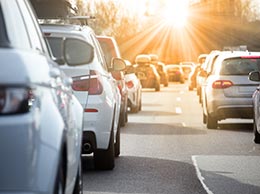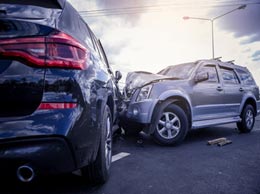
Why do I need my own policy?
You need to have auto insurance because in most states you are legally required to have at a minimum some small amount of liability insurance. If you have a loan on your vehicle, your lien holder will also require that you have property damage coverage to protect the asset that they are loaning you money for. Now, the reason you need your own auto policy has more to do with insurance company underwriting rules and accurate risk rating. A person with an insurable interest in the vehicle must be listed on the auto policy. This means if you have your name on the loan or the title of the vehicle, you must be the named insured on the policy. You also need your own policy because auto insurance must follow you around wherever the vehicle is garaged. If your policy doesn’t match where the vehicle is kept, the insurance company may deny your claim since the risk represented on the policy did not line up with reality. Finally, you want your own policy so that you can build insurance history. Most have heard the common myth that when a driver turns 25 years old, their auto insurance premium decreases, but this is actually not true. Auto insurance will decrease in premium because of increased driving experience and consistent insurance history. The earlier you get your own policy, the earlier you start building that history.
What’s the point of auto insurance?
For most people, understanding insurance is probably like learning a foreign language to you. At the root of it, auto insurance is meant to both protect you as a driver from accidents that happen to you, as well as protect you from the financial responsibility of other people’s damages if you were to cause an accident. “Full Coverage” is one of the most commonly tossed around terms when it comes to auto insurance, but what does it really mean? The term “Full Coverage” is misleading, because there are so many different configurations for an auto policy, and each of them will have specific limits and benefits. Let’s break it down into simple terms so you know exactly what it’s used for and can be armed with the knowledge to make a good decision.
Liability
- Liability refers to the coverage that pays out for damages that are caused in an accident caused by the policyholder. This can include damages to other people’s property as well as bodily injuries and medical payments. Liability coverage is outward-paying, meaning that it pays OTHER people for damages that you have caused. Almost every state requires that drivers carry a minimum amount of liability insurance to protect drivers on the road. Each auto insurance policy will have a limit to the amount that they will pay out for damages caused by the driver. These coverages are often structured as “Split Limits”. This means that there will be sub-limits that show the max amount that will be paid out in different scenarios. For example, a split limit may appear as “100/300/100. The first number refers to the per-person limit for bodily injury, the second number refers to the per-occurrence limit for bodily injury, and the third number is the property damage limit.
- Property damage coverage pays out for damage caused to your vehicle. Damage to the vehicle will fall into one of two categories depending on the cause of the damage. Damages caused by the vehicle colliding with something are categorized as collision damage. Damages caused by anything other than a collision are categorized as comprehensive damage. With either loss type, the insurance company will pay the cost to repair the damage or replace the vehicle after the insured pays the deductible. Deductibles for an auto insurance policy typically range between $500 and $1000. To decide what deductibles you’d like on the policy, think about what you would feel comfortable paying out of pocket in the event of a claim. Uninsured Motorist
- This coverage applies to take care of your bodily injury (and in some states property damage) costs if someone were to hit you and they did not have any or enough insurance to cover your damages. Similar to your liability limits, these will often be split limits.
- Medical Payments and Personal Injury Protection (PIP) are coverages that can be used for anyone in any vehicle that’s involved in a wreck to help pay medical bills.
- Rental car coverage or loss of use coverage can be used if your car is in the shop for a covered claim, and you are needing to drive another vehicle around while it’s getting fixed. This coverage will pay the cost of a rental car.
- This coverage exists simply to be sure the driver is never stranded anywhere due to car troubles. If the car breaks down, has a flat tire, or runs out of gas, roadside assistance can come out to lend a hand.
Along with the “full coverage” misnomer, there are several other things to look out for when purchasing auto insurance for the very first time. Each state does require a minimum amount of liability insurance and it will vary from state to state, but that doesn’t mean you should go with the bare minimum coverage. When paying for other people’s medical bills, the costs can add up very quickly, so you want to purchase the maximum amount of coverage that you can afford. Remember, just because you aren’t a millionaire, doesn’t mean you can’t get sued like one (and have to shell out a lot of money out of pocket).
You also want to take a look at what type of company you are securing insurance from. There are different types of companies, standard and non-standard. A standard insurance company reports to the state’s department of insurance and is held to high legal standards to pay out on clients’ claims. On the other side of the coin, there are non-standard companies that do not report to the state’s department of insurance and therefore have minimal legal obligations to actually pay out on claims and do not have high financial security standards for the company.
How do I go about it?
Armed with the facts, you are now ready to go secure your first auto insurance policy! It’s important to reach out to a trusted agent to walk you through the process and explain the coverages and costs to you. There are two distinct types of insurance agents, and it is important to know the difference.
- Captive Agents: These are agents who work exclusively with one insurance company. They are typically very knowledgeable about their product since it is the only thing they can offer, but they are limited in their options.
- Independent Agents: These are agents who work with multiple insurance companies to find the best option for each person. This is very convenient because you can check out options with multiple companies while only having to speak with one agent.
After finding the right agent, you’ll want to be sure that you have all the necessary information. Be sure that you have all of the info on the vehicle. The type and year model of the vehicle, VIN, and lienholder information are some common things that an agent may ask about the vehicle. You’ll also what to be sure that you know details about any drivers that will also be on the policy. Date of birth, driver's license number, and driver's license state will always be required. Information about their education, occupation and driving experience also ties into rating factors that can lead to discounts and better rates.
Finding auto insurance for the first time can be intimidating but having an understanding of what you’ll need to protect yourself and partnering with a knowledgeable agent will help you make intelligent insurance decisions.
The contents of this article are for informational purposes only. You should not act or refrain from acting based on this information without first consulting a Goosehead licensed agent at [email protected]. We disclaim all liability for actions taken or not taken by you based on the contents of this article which is provided "as is." Goosehead makes no representation that this content is error-free.

